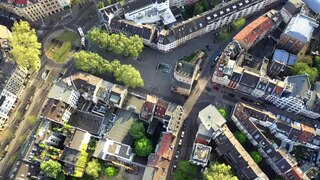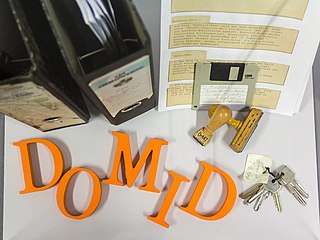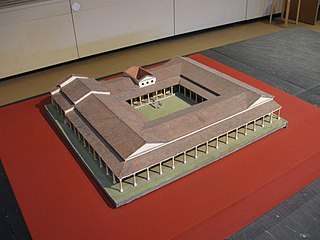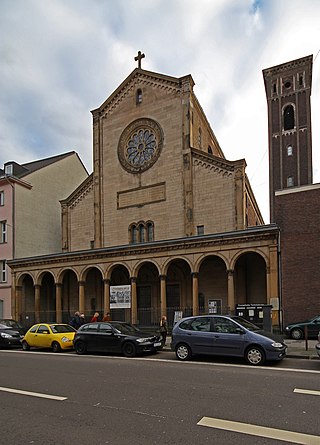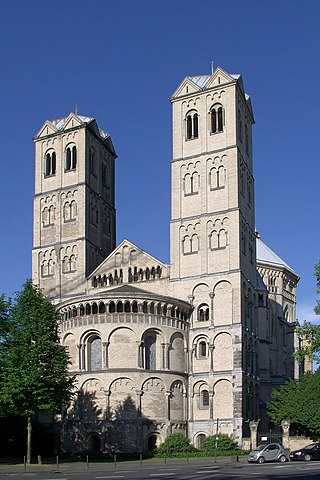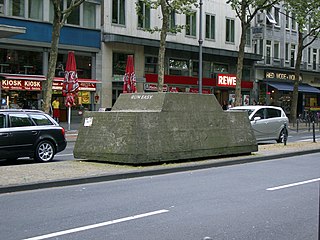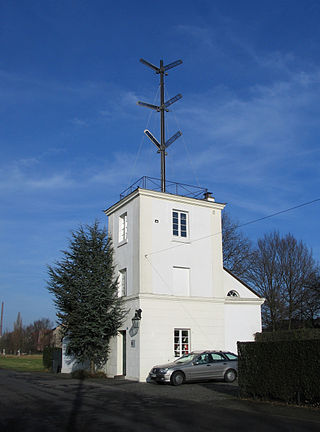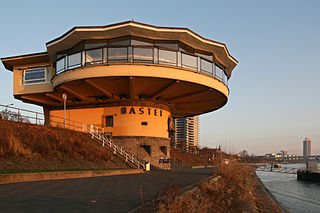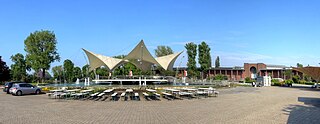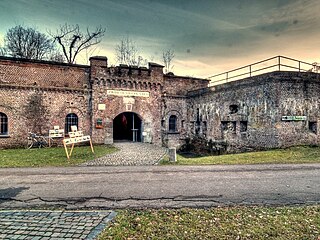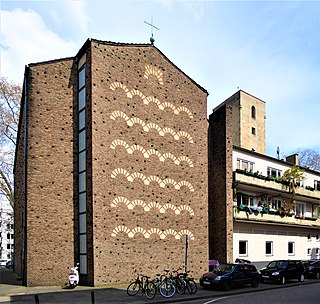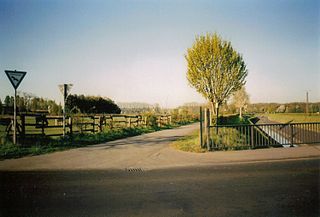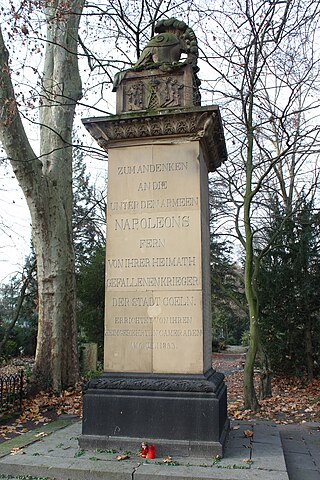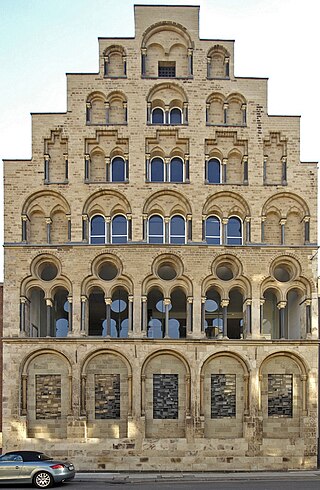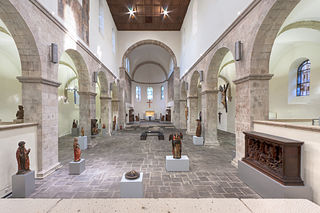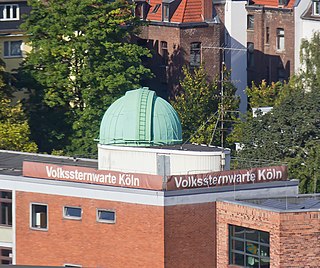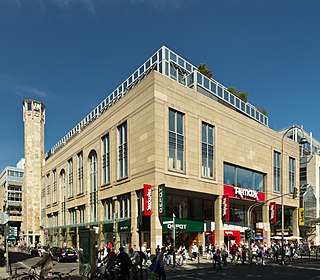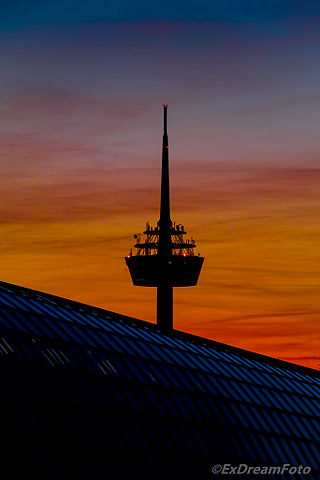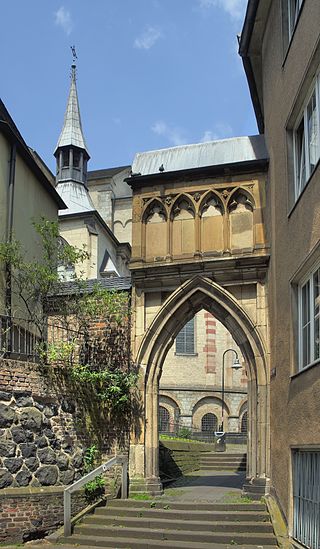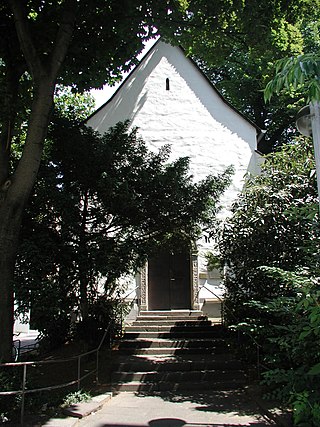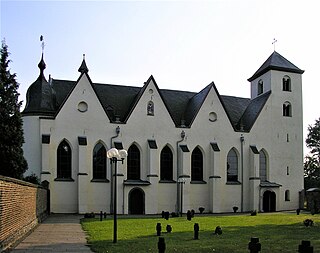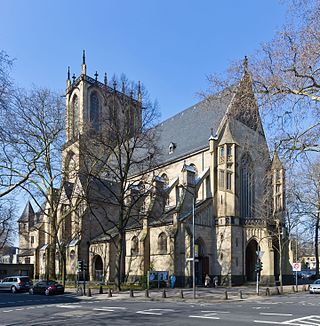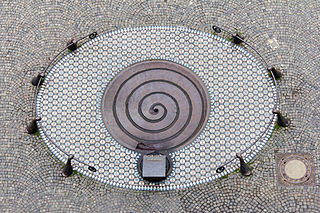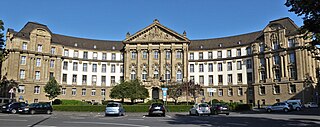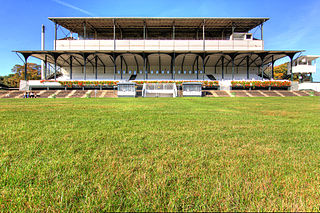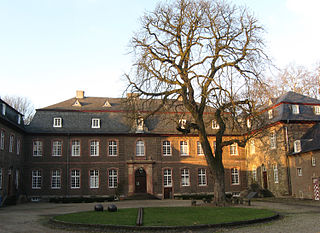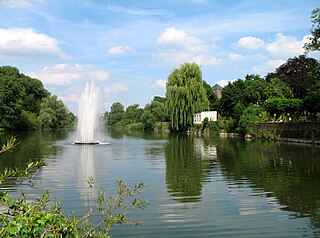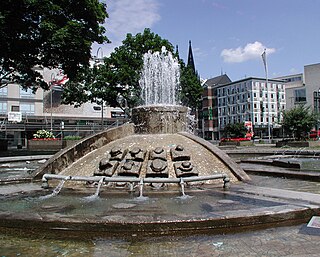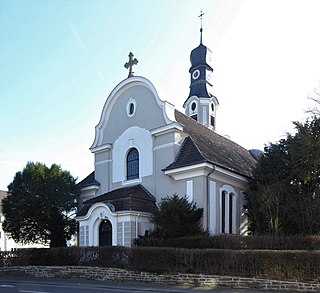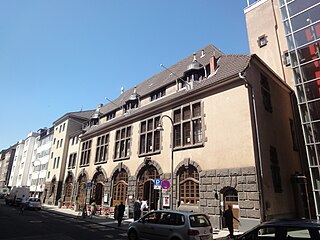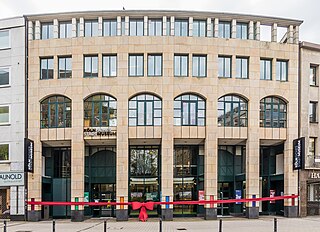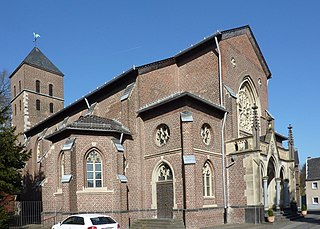100 Sights in Cologne, Germany (with Map and Images)
Legend
Premium Sights
Book tickets, guided tours and activities in Cologne.
Guided Free Walking Tours
Book free guided walking tours in Cologne.
Welcome to your journey through the most beautiful sights in Cologne, Germany! Whether you want to discover the city's historical treasures or experience its modern highlights, you'll find everything your heart desires here. Be inspired by our selection and plan your unforgettable adventure in Cologne. Dive into the diversity of this fascinating city and discover everything it has to offer.
Sightseeing Tours in CologneActivities in CologneMuseum Ludwig, located in Cologne, Germany, houses a collection of modern art. It includes works from Pop Art, Abstract and Surrealism, and has one of the largest Picasso collections in Europe. It holds many works by Andy Warhol and Roy Lichtenstein.
Cologne Cathedral is a cathedral in Cologne, North Rhine-Westphalia belonging to the Catholic Church. It is the seat of the Archbishop of Cologne and of the administration of the Archdiocese of Cologne. It is a renowned monument of German Catholicism and Gothic architecture and was declared a World Heritage Site in 1996. It is Germany's most visited landmark, attracting an average of 6 million people a year. At 157 m (515 ft), the cathedral is the tallest twin-spired church in the world, the second tallest church in Europe after Ulm Minster, and the third tallest church of any kind in the world.
The Flora und Botanischer Garten Köln is a municipal formal park and botanical garden located adjacent to Cologne Zoological Garden at Amsterdamer Straße 34, Cologne, North Rhine-Westphalia, Germany. It is open daily without charge.
St. Maria im Kapitol is an 11th-century Romanesque church located in the Kapitol-Viertel in the old town of Cologne, Germany. The name “im Kapitol“ refers to the Roman temple for the Capitoline Triad that was built on today’s site of the church in the first century. The Catholic church is based on the Church of the Nativity in Bethlehem, was dedicated to St. Mary and built between 1040 and 1065. It is one of twelve Romanesque churches built in Cologne during this period.
The Cologne Chocolate Museum is a special museum for chocolate in the Cologne district of Altstadt-Süd. The exhibition building, located on a peninsula in the Rheinauhafen, houses a collection on the history of chocolate and a permanent exhibition on modern chocolate production, among other things.
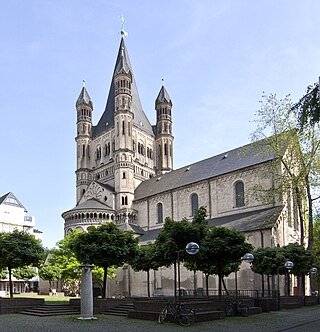
The Great Saint Martin Church is a Romanesque Catholic church in Cologne, Germany. Its foundations rest on remnants of a Roman chapel, built on what was then an island in the Rhine. The church was later transformed into a Benedictine monastery. The current buildings, including a soaring crossing tower that is a landmark of Cologne's Old Town, were erected between 1150-1250. The architecture of its eastern end forms a triconch or trefoil plan, consisting of three apses around the crossing, similar to that at St. Maria im Kapitol. The church was badly damaged in World War II; restoration work was completed in 1985.
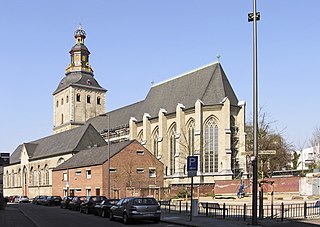
The Basilica church of St. Ursula is located in Cologne, North Rhine-Westphalia, Germany. It is built upon the ancient ruins of a Roman cemetery, where the 11,000 virgins associated with the legend of Saint Ursula are said to have been buried. The church has an impressive reliquary created from the bones of the former occupants of the cemetery. It is one of the twelve Romanesque churches of Cologne and was designated a Minor Basilica on 25 June 1920. While the nave and main tower are Romanesque, the choir has been rebuilt in the Gothic style.
The Rheinauhafen is a 15.4 hectares urban regeneration project in Cologne, Germany, located along the river Rhine between the Südbrücke and Severinsbrücke, just south of the inner city's historic old town.
9. Albertus Magnus
Albertus Magnus, also known as Saint Albert the Great, Albert of Swabia or Albert of Cologne, was a German Dominican friar, philosopher, scientist, and bishop, considered one of the greatest medieval philosophers and thinkers.
10. Persian Onager
The onager (Equus hemionus), also known as hemione or Asiatic wild ass, is a species of the family Equidae native to Asia. A member of the subgenus Asinus, the onager was described and given its binomial name by German zoologist Peter Simon Pallas in 1775. Six subspecies have been recognized, two of which are extinct.
11. Archäologische Zone / Neubau Jüdisches Museum „MiQua“
MiQua. LVR-Jewish Museum in the Archaeological Quarter of Cologne is a museum under construction that will house an approximately 6,000 m² archaeological excavation area on and around the Rathausplatz in the center of the city of Cologne. The site displays archaeological relics from the entire 2000-year history of the city. The Roman period and the medieval Jewish quarter are particularly relevant. On the town hall square, which was no longer built on after the destruction in the Second World War, a museum for the Roman and Jewish history of the city is currently being built.
12. DITIB-Zentralmoschee
The Cologne Central Mosque is a building commissioned by German Muslims of the Organization DİTİB for a large, representative Zentralmoschee in Cologne, Germany. This mosque was inaugurated by Turkish President Erdogan. After controversy, the project won the approval of Cologne's city council.
13. Lommi-Brunnen
The Lommerzheim, also known as Lommi, is a restaurant in Cologne-Deutz that was run in its original form from 1959 to New Year's Eve 2004 by the innkeepers Hans and Annemie Lommerzheim. The combination of a dilapidated and neglected-looking building, the interior furnishings, which apparently never been renovated, and the idiosyncrasies of the landlord couple earned the pub the reputation as the "most Cologne of all Cologne pubs". After several years of vacancy, the restaurant was renovated in the style of the furnishings of the old restaurant and reopened in March 2008.
14. Kreissparkasse Köln
Kreissparkasse Köln is a public savings bank and universal bank based in Cologne. It is a special-purpose savings bank with the districts of Rhein-Erft, Rhein-Sieg, Rheinisch-Bergisch and Oberbergisch as the sponsor, over which its business area also extends. In terms of total assets, it is the second largest savings bank in Germany.
15. St. Stephan
The Roman Catholic Church of St. Stephen was built between 1884 and 1887 according to plans by August Carl Lange and Robert Mohr in Cologne-Lindenthal. It was one of the first churches in Germany to be destroyed on May 27/28, 1941. Only the church tower was restored in a modified form after the Second World War. The church tower and some of the church's furnishings were placed under monument protection on 24 July 1985 and 19 June 2001 and entered into the list of monuments of the city of Cologne.
16. Pegel Köln
The Cologne gauge is located in Cologne's Altstadt-Nord on the left bank of the Rhine and measures the water level of the Rhine at river kilometre 688. It is one of 22 gauges on the Rhine and, along with the Kaub gauge, the most important. It is operated by the Rhine Waterways and Shipping Authority.
17. Gürzenich
The Gürzenich is a festival hall in the center of the old town of Cologne. The name of Gürzenich is the name of which the profile structure was built in the 15th century on which the property was built. Since the beginning of the 19th century, the building complex for concerts, congresses, social and cultural events has been used.
18. Star-Pit
Otto Piene was a German-American artist specializing in kinetic and technology-based art, often working collaboratively. He lived and worked in Düsseldorf, Germany; Cambridge, Massachusetts; and Groton, Massachusetts.
19. Wallraf-Richartz-Museum & Foundation Corboud
The Wallraf–Richartz Museum is an art museum in Cologne, Germany, with a collection of fine art from the medieval period to the early twentieth century. It is one of the three major museums in Cologne.
20. St. Mariä Himmelfahrt
The Catholic parish church of St. Mary's Assumption was for a long time the largest church in Cologne after the cathedral and is one of the few remaining architectural testimonies of the Baroque in the city. The former Jesuit college church, located on Marzellenstraße near the cathedral, was built according to plans by Christoph Wamser, who had already built the Jesuit church in Molsheim (Alsace). This church also served as a direct model for St. Mary's Assumption. Wamser is also documented as a construction manager until 1623. After that, Valentin Boltz from Thuringia took over the construction management and interior design.
21. Sankt Engelbert
St. Engelbert is a Catholic church in Cologne-Riehl, Germany. It was built from 1930 to 1932 according to a design by the architect Dominikus Böhm and is considered the first modern church building in Cologne and also one of the original buildings of modern church architecture.
22. Bauerngarten Thurner Hof
The Thurner Hof is a manor house located in Cologne-Dellbrück and former knight's residence, which consists of the manor house at the southeast corner, a four-winged courtyard and a corner tower at the northwest corner. It has been owned by the city of Cologne since 1911. "Thurn" is an Old High German form of tower and refers to the original form of the castle in the form of a moth. The name was also transferred to the associated settlement, today part of Cologne-Dellbrück. The courtyard is surrounded by a 7,200 m² garden area to the east and south.
23. Christuskirche
The Christuskirche is a Protestant church in the Belgian Quarter in Cologne's Neustadt district, originally built in the neo-Gothic style according to plans by the architects August Hartel (1844–1890) and Skjøld Neckelmann (1854–1903) by diocesan master builder Heinrich Wiethase (1833–1893). In February 2014, the nave was demolished by decision of the Evangelical Community of Cologne in order to build a smaller nave and a residential and commercial property with parish rooms on the site according to plans by Klaus Hollenbeck Architekten and MAIER ARCHITEKTEN. The church was reconsecrated in 2016.
24. St. Johannisgemeinde
The Independent Evangelical-Lutheran Church is a confessional Lutheran church body of Germany. It is a member of the European Lutheran Conference and of the International Lutheran Council (ILC). The SELK has about 33,000 members in 174 congregations. The seat of SELK is in Hanover.
Wikipedia: Independent Evangelical-Lutheran Church (EN), Website
25. Ulrepforte
The Ulrepforte was built in the early 13th century as part of the medieval city wall of Cologne. It was first mentioned in a document in 1245. The Ulrepforte has been preserved with major structural changes. In front of it, the Sachsenring road passes as part of the Cologne Rings.
26. Straßenbahnmuseum
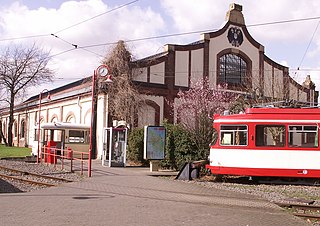
The Thielenbruch Tram Museum presents the history of rail-bound urban transport in Cologne. It is located in the Cologne district of Dellbrück and was opened in 1997. In a wagon shed from 1906 on the eastern outskirts of Cologne, the collection of vehicles of the Cologne Transport Authority, which has been gradually built up since the 1960s and 1970s, is presented. With around two dozen tram vehicles, some of which are ready for operation, it offers an overview of the development of this means of transport from horse-drawn trams to light rail vehicles. The association "Historische Straßenbahn Köln e. V." runs the museum on a voluntary basis. The building complex also houses the inn in the museum.
27. Stadtwald
The Cologne City Forest is a spacious park created at the end of the 19th century in the western Cologne district of Lindenthal. The green area, which is equipped with a game reserve, ponds and water canals as well as sports and playgrounds and an extensive network of paths, is a popular local recreation area on the left bank of the Rhine.
28. Bayenturm
The Bayenturm is a medieval fortified tower in the city center of Cologne. The defiant Bayenturm, built like a castle, was built around 1220 as part of the eight-kilometre-long medieval city fortifications. The southern corner tower of the city wall on the Rhine is today one of the few testimonies of this complex, which enclosed Cologne for 700 years. The tower is about 35 meters high with a ground floor and four upper floors including battlements. Today, the Bayenturm is the headquarters of the non-profit foundation "FrauenMediaTurm".
29. St. Gregorius am Elend
St. Gregorius im Elend, sometimes also called St. Gregorius Am Elend and in the vernacular Elendskirche, is a late Baroque style church in Cologne's Old Town. The church is a reconstruction of the 18th century building destroyed in the Second World War. It is located between Sionstal Street, Arnold-von-Siegen-Straße and Severinstraße on An St. Katharinen Street.
30. Kölner Zoo
The Aktiengesellschaft Cologne Zoological Garden is the zoo of Cologne, Germany. Being the third oldest zoo in Germany, it features over 10,000 animals of more than 850 species on more than 20 hectares. The internationally renowned zoo with an attached aquarium and invertebrate exhibit is active in preservational breeding of animals that are in danger of becoming extinct. In addition, in-the-wild conservation efforts and research focussing on animals of Madagascar, Wallacea, and Vietnam are actively promoted and supported via cooperation with Cologne University and local projects, such as in the case of Przewalski's horses.
31. Deutsches Sport- und Olympiamuseum
The German Sport & Olympic Museum is a museum in Cologne that presents the history of sports from antiquity to modern times. It is located in Cologne's Rheinauhafen within the Cologne-Altstadt-Süd district.
32. Kartäuserkirche

The Carthusian Church is the church of the former Carthusian monastery in Cologne, founded in 1334, the Cologne Charterhouse. Today, the church serves as a parish church for the Protestant congregation of Cologne.
33. St. Maria vom Frieden
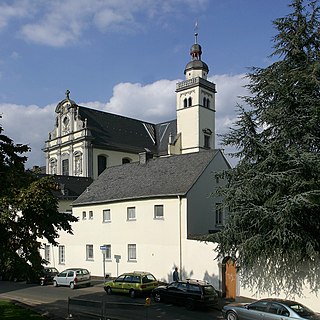
Maria vom Frieden is a baroque church in the southern old town of Cologne. The convent church of a convent of the Discalced Carmelites was consecrated in 1692 after several years of construction. The patronage refers to a miraculous image of the Mother of God, which was bequeathed to the convent in 1642 as an inheritance. In April 1942, the church and monastery were largely destroyed, but between 1947 and 1957 they were gradually rebuilt in the old style.
34. Cologne Cathedral Treasury
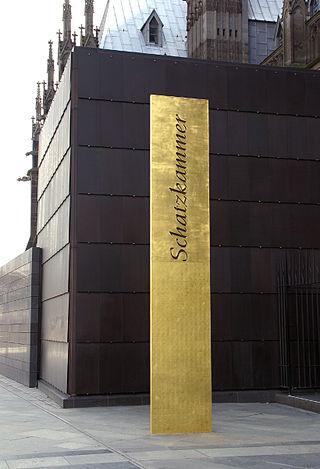
The Cologne Cathedral Treasury of the Metropolitan Chapter of the High Cathedral Church belongs to Cologne Cathedral. It is located on the north side of the cathedral. Large parts of the Cologne Cathedral Treasury are exhibited in it. Christian art from the 4th to the 20th century is shown there. The cathedral treasury was inaugurated on 21 October 2000 and was heavily criticised at the time. Many felt that the cube encased in dark bronze plates, which represents the entrance area to the cathedral treasury, was a foreign body in front of the Gothic north façade of the cathedral.
35. Der Schwebende
The Floating Angel, also known as the Floating Angel or Güstrow Memorial, is a bronze sculpture created by Ernst Barlach in 1927, the first cast of which has been lost and of which three bronze recasts and a plaster cast exist today.
36. St. Heribert
The Roman Catholic parish church of St. Heribert is a three-aisled pillar basilica in the Cologne district of Deutz. In the vernacular, the church is also known as Düxer Cathedral. The showpiece of the church is the Heribertschrein, which preserves the relics of Archbishop Heribert of Cologne and founder of Deutz Abbey.
37. Krieler Dom (St. Stephanus)
Die Kirche Alt St. Stephan, Krieler Dömchen genannt, ist das älteste kirchliche Gebäude in Köln-Lindenthal und nach St. Gereon das zweitälteste Kölns. Das Gründungsjahr als christliche Kirche ist unbekannt. Die Kirche gehört zu den 13 kleinen romanischen ehemaligen Dorfkirchen vor der mittelalterlichen Stadtmauer Kölns, die heute zu Köln gehören. Sie wird vom Förderverein Romanische Kirchen Köln betreut. Alt St. Stephan diente bis zur Einweihung der neuen Pfarrkirche St. Stephan in der Bachemer Straße im Jahr 1887 den Krielern und der übrigen katholischen Bevölkerung Lindenthals als Pfarrkirche.
38. Severinstorburg
The Severinstorburg, in the Middle Ages also called "Porta (Sancti) Severini", later Severinsportz(en), Severinspforte, in Cologne Vringspooz or simply Severinstor, is one of four surviving city gates of the medieval city wall of Cologne, it is the landmark of the Severinsviertel in Cologne along with St. Severin and an excellent example of medieval fortification architecture.
39. Theater im Bauturm
The Theater im Bauturm – Freies Schauspiel Köln is an independent theatre that was founded in 1983 in the building of the architectural group Bauturm. It is located in the Belgian Quarter on Aachener Straße, behind the café in the Bauturm, diagonally opposite the Volksbühne.
40. DOMiD
DOMiD is a registered association in Cologne that collects, preserves, researches and exhibits materials on the history of migration. The history of immigration in Germany is to be presented to a broad audience. In addition to its museum and archival work, DOMiD organizes events, conferences and lectures. The aim is to convey migration as a normal case. Since 2010, DOMiD has been located in the district town hall in Cologne-Ehrenfeld.
41. Auferstehungskirche Buchforst
The Church of the Resurrection, known as Kulturkirche Ost in Cologne-Buchforst, is a modern Protestant church building with a community centre inaugurated in 1968, designed by the architects Georg Rasch and Winfried Wolsky. In 2012, the municipal housing association GAG Immobilien took over the sponsorship to promote the location through cultural events. The church is considered an outstanding example of Protestant church architecture of the post-war period and was placed under monument protection in 1992 with the inclusion of the courtyard paving. The buildings were abandoned by the Protestant parish in May 2005 and given a new use as part of a model project. The church building and the paving of the courtyard were preserved, the outbuildings were renewed.
42. Dionysosmosaik
The Peristyle House with the Dionysus Mosaic is a Roman dwelling house, the remains of which were found in 1941 during the excavation of an air-raid shelter, the cathedral bunker, near Cologne Cathedral.
43. Trinitatiskirche
The Trinitatiskirche is the oldest newly built Protestant church in Cologne on the left bank of the Rhine. It is located in the southern old town on Filzengraben, near the Heumarkt. Due to the depopulation of the city centre, it no longer holds regular community services, but it does host central events of the Protestant Church Association for the Cologne region, services on special occasions, concerts and art exhibitions. The Trinity Church serves as a place of worship for the Protestant deaf community. The cultural partner is the WDR Radio Choir.
44. St. Gereon's Basilica
St. Gereon's Basilica is a German Roman Catholic church in Cologne, dedicated to Saint Gereon, and designated a minor basilica on 25 June 1920. The first mention of a church at the site, dedicated to St. Gereon, appears in 612. However, the building of the current choir gallery, apse, and transepts occurred later, beginning under Archbishop Arnold II von Wied in 1151 and ending in 1227. It is one of twelve great churches in Cologne that were built in the Romanesque style.
45. ruhender Verkehr
Stationary Traffic is an action sculpture on Cologne's Hohenzollernring, created in 1969 by Wolf Vostell – it consists of a car completely encased in concrete, whose contours have been preserved in a roughly simplified form and ironically depicts "stationary traffic" on public roads.
46. St. Maria ad Ortum
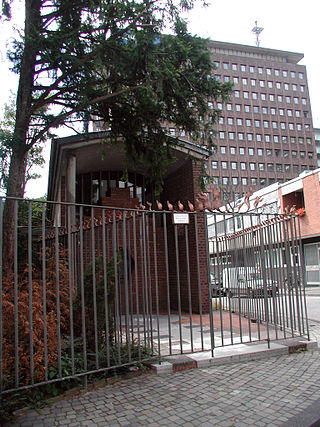
Maria ad Ortum was a three-aisled late Romanesque church of the Cistercian order "zo sent Marie garden", Mariengarten, in Cologne, which was abolished and laid down during the French period. It is still remembered today by a street name and a chapel bearing its old Latin name.
47. Optischer Telegraph
The Prussian semaphore system was a telegraphic communications system used between Berlin and the Rhine Province from 1832 to 1849. It could transmit administrative and military messages by optical signal over a distance of nearly 550 kilometres (340 mi). The telegraph line comprised 62 stations each furnished with a signal mast with six cable-operated arms. The stations were equipped with telescopes that operators used to copy coded messages and forward them to the next station. Three dispatch departments located in Berlin, Cologne and Koblenz handled the coding and decoding of official telegrams. Although electric telegraphy made the system obsolete for military use, simplified semaphores were still used for railway signals.
48. Bastei
The Bastei is a building in Cologne-Neustadt-Nord, located at the northern end of the Cologne Rings directly on the banks of the Rhine. Since its opening on 22 October 1924, the construction with a useful area of 300 m² has been used as a viewing restaurant. Since 2019, the operation has been resting due to structural defects.
49. Hahnentorburg
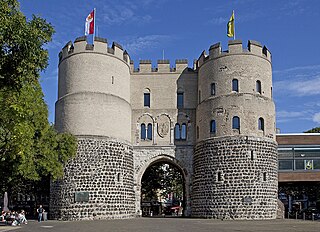
The Hahnentorburg is one of originally twelve gate castles in the eight-kilometre-long medieval city wall of Cologne (1180–1220) and secured the western access to the city on the road to Aachen and Jülich. It is located on today's Rudolfplatz.
50. Tanzbrunnen
The Tanzbrunnen is a venue in Cologne, Germany, located north of the old exhibition halls on the right bank of the Rhine in the Deutz district. With around 30,000 m², it is the largest part of the approximately 48,500 m² Rhine Park. The Tanzbrunnen offers space for up to 12,500 spectators at major events such as open-air concerts. The site includes the open-air stage, the Theater am Tanzbrunnen, the Rheinterrassen restaurant and, since 2004, the km 689 Cologne Beach Club with a beach area of 3,500 m² on the banks of the Rhine.
51. Kölner Festungsmuseum
The Cologne Fortress Museum is a museum run by volunteers, some of which is still under construction, which aims to document and present the entire Prussian fortifications in Cologne. The museum has existed since 2004 in Zwischenwerk VIII b in the former outer fortress ring of Cologne in the Cologne district of Marienburg.
52. Lutherkirche Südstadt
The Luther Church is a Protestant church in Cologne's Südstadt district. The church forms a separate district of the Evangelical Community of Cologne, which belongs to the church district of Cologne-Mitte of the Evangelical Church in the Rhineland.
53. Mündungspark Alter Hafen
The Cologne Edge Canal is an almost 20-kilometre-long drainage canal that was built between 1954 and 1959. It runs along the northern and western city limits of Cologne at Cologne-Widdersdorf and through Cologne-Lövenich and flows into the Rhine at Cologne-Worringen. The canal is operated by a special-purpose association in which industry and the adjacent municipalities are involved.
54. Napoleonstein
The Napoleon Stone at the Melaten Cemetery in Cologne is a war memorial for soldiers from Cologne who fought under Napoleon Bonaparte and died during the Napoleonic Wars. The monument was inaugurated in 1853, 39 years after the end of the French period in Cologne. It was donated by 65 surviving war participants and is therefore also a veterans' monument.
55. Christi Auferstehung

Christi Auferstehung (Resurrection of Christ) is a Catholic church in the Lindenthal district of Cologne, which was built between 1968 and 1970 according to plans by the architect Gottfried Böhm and consecrated in 1971. It is considered a typical example and conclusion of a series of very sculptural, sculptural buildings by the architect.
56. Overstolzenhaus
The Overstolzenhaus in Cologne is one of the oldest buildings in the city of Cologne, is the oldest surviving patrician house in Germany along with the Trier Dreikönigenhaus and was mainly used as a residential building. It is somewhat hidden in Rheingasse 8, Altstadt-Süd.
57. Museum Schnütgen
The Schnütgen Museum in Cologne is devoted to Christian religious art, mainly medieval, but some parts of the collection, such as its textiles and prints, extend from antiquity to the modern period. In 1906, the collection of Alexander Schnütgen was donated to the city, and the collection has continued to expand, so that until the opening of a new building in 2010, only about 10% of its 13,000 items could be displayed. Now some 2,000 objects are on display in 1900 sq. metres of gallery space, with an additional 1300 sq. metres for special exhibitions. Schnütgen (1843–1918) was a Catholic priest and theologian; according to the museum website "Up to now people tell stories about his zealous and sometimes crafty collection tactics".
58. Volkssternwarte Köln
The Cologne Public Observatory is a volunteer-run observatory in the district of Cologne-Sülz, which belongs to the district of Cologne-Lindenthal. It is located on the roof of the Schiller Gymnasium there at Nikolausstraße 55.
59. Richmodis-Haus
The Richmodis-Haus is a commercial building in Cologne's Altstadt-Nord, at Neumarkt 8-10/corner of Richmodstraße 2. A special feature of this house with a stone façade is the octagonal Richmodis Tower, renovated in 1928, where two horses' heads look out of the upper window. These horse heads go back to the old Cologne Richmodis legend about Richmodis von Aducht.
60. Colonius
Colonius is the Cologne telecommunications tower, which was finished in 1981. The Colonius possesses a cafeteria, viewing platform, and a restaurant, apart from antennas for radio relay and radio services within the VHF range. Because of a missing leaseholder, the visitor's area including restaurant and viewing platform has been closed since 1992. At the time of its completion the Colonius was 252.9 meters high. In 2004 a radio tower added by helicopter increased the height to 266 meters. This addition allowed the broadcast of digital television (DVB-T) from the tower in the Cologne/Bonn region.
61. Deutsches Tanzarchiv
The Deutsche Tanzarchiv Köln is a national information and research centre for concert dance in Germany. It is located in the MediaPark in Cologne, North Rhine-Westphalia, with an archive, library, video library and museum on the history around dance for an audience.
62. Dreikönigenpförtchen
The hidden Epiphany Gate is the only one of the gates of Cologne's many former monastic immunity districts to have been preserved. At the walls of these monasteries and monasteries, the city's legislative power and tax sovereignty ended. The gate connects the Lichhof of the Church of St. Maria in the Capitol with Marienplatz. The small gate is not to be confused with the medieval Three Kings Gate, a gateway of the city fortifications on the Rhine side that was demolished in 1854.
63. Hl. Konstantin u. Helena
The Church of St. Maria Ablass was a three-aisled basilica with a western quadrangle tower in the northern Cologne suburb of Niederich. It was first mentioned as St. Mary's Church in 927 and was the parish church of the St. Ursula convent until 1804. It was abandoned in 1808 as a result of secularization and the dissolution of the monastery, as it did not become a parish church again. The small Marian chapel, the Maria Ablass Chapel, which was formerly attached to it, commemorates them. Today it is used as the St. Constantine and Helena Church by the Russian Orthodox community of Cologne.
64. Neu St. Alban
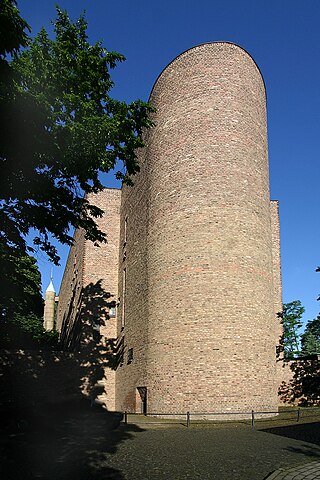
Neu St. Alban is a parish church in the Neustadt-Nord district of Cologne, Germany. The church was built in 1958/1959 according to plans by Hans Schilling from rubble bricks. Among other things, building material from the Cologne Opera, which was slightly damaged in the Second World War and demolished in 1958, was used. From the church of Alt St. Alban next to the Gürzenich, preserved furnishings were taken over.
65. St. Nikolaus
The Roman Catholic Church of St. Nicholas on Berrenrather Straße at Nikolausplatz in Cologne-Sülz belongs to the parish of St. Nicholas and Charles Borromeo. Together with the Church of St. Bruno in Cologne-Klettenberg, it forms the pastoral care area of Sülz-Klettenberg in the deanery of Cologne-Lindenthal.
66. Der Tauzieher
The Tauzieher is a limestone sculpture by Nikolaus Friedrich which was erected in 1911 in Rheinauhafen, Cologne. It depicts a man making a heavy rope or hawser fast to a bollard and is 6.5 metres in height. In 1980, it was listed as one of the first heritage sites in Cologne.
67. Kallendresser
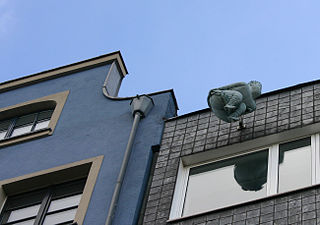
The Kallendresser has played a role as a figure in Cologne since the Middle Ages. It can be found, for example, on the consoles of the figures in Cologne's town hall tower, which depict men stretching their bare buttocks towards the viewer.
68. St. Paul
St. Paul is the name of a neo-Gothic parish church consecrated in 1908 on Vorgebirgstraße/Lothringer Straße in the district of Innenstadt (Neustadt-Süd). The name of the Archbishop of Cologne, Paulus Melchers, was also the inspiration for this. The patronage comes from the former Romanesque parish church and parish of St. Paul, which belonged to the collegiate church of St. Andreas and was located east of it. Alt St. Paul had been demolished in 1807.
69. Taubenbrunnen
The Pigeon Fountain is a fountain sculpture designed by Ewald Mataré and erected in 1953 in the Cologne district of Altstadt-Nord, located in front of the west side of Cologne Cathedral or the Domplatte.
70. Röhrenbunker
The Reichenspergerplatz court building is a historic building in Cologne-Neustadt-Nord. The building, which today houses the Cologne Higher Regional Court, the Cologne Public Prosecutor's Office and parts of the Cologne District Court, is a listed building. Since the end of 2017, the building has also been the headquarters of the victim protection commissioner of the state of North Rhine-Westphalia.
71. Weidenpescher Park
Weidenpescher Park is a 55-hectare green space in Cologne-Weidenpesch, where several sports facilities are located. In the years before the First World War, a sports centre was built here, which only had to take a back seat with the construction of the sports park in Müngersdorf in 1923. Weidenpescher Park was also home to Cologne's first golf course.
72. Schloss Wahn
Schloss Wahn is a three-winged palace complex built according to the plans of the architect Johann Georg Leydel in the late Baroque style in the Cologne district of Wahn, which corresponded to the model of a French "Maison de plaisance", but also fulfilled its purpose as an estate. The building ensemble of the castle has been protected as an architectural monument since 9 November 1982.
73. Groov
Die Groov ist eine ehemalige Insel mit einem verlandeten Flussarm am Rhein in Köln-Zündorf. Ihr heutiges Aussehen hat sie in den Jahren 1974 bis 1978 erhalten, in denen eine Marina angelegt und die Insel mit den nebenanliegenden Flächen als Freizeitanlage ausgebaut wurde. Die Gesamtanlage wurde nach dem Entwurf des Architekturbüros Gottfried Kühn, Jürgen Schubert und Partner aus dem Jahr 1972 realisiert.
74. Opernbrunnen
The Cologne Opera Fountain is a fountain on Cologne's Offenbachplatz in front of the Cologne Opera. It was inaugurated on 21 December 1966 and finally put into operation in 1967. To this day, it is of great importance in terms of urban planning and architecture. The fountain sculpture was designed and realized by the Cologne artist Jürgen Hans Grümmer.
75. NS-Dokumentationszentrum
The NS Documentation Centre of the City of Cologne(German: NS-Dokumentationszentrum der Stadt Köln) was founded by a resolution passed by the Cologne city council on December 13, 1979, and has become the largest regional memorial site in all of Germany for the victims of the Nazis. Since 1988, it has been housed in "EL-DE Haus," the EL-DE building, named for the initials of its owner, Catholic businessman Leopold Dahmen. This building was the headquarters of the Cologne Gestapo between December 1935 and March 1945. In the final months of the war, several hundred people, most of them foreign forced laborers, were murdered in the courtyard of the building. In a bit of historical irony, the EL-DE building remained largely untouched by the ravages of the war.
Wikipedia: NS Documentation Centre of the City of Cologne (EN), Website
76. Christuskirche Dellbrück
The Christuskirche is a Protestant church in the Cologne suburb of Dellbrück on the right bank of the Rhine. It was built in the neo-baroque style according to plans by the architect Otto March and ceremonially inaugurated on 18 June 1905.
77. COMEDIA Theater
The COMEDIA Theater is an independent children's and youth theater based in Cologne's Südstadt. The theatre was founded in Würzburg in 1974 under the name "Ömmes & Oimel" and has been based in Cologne since 1977.
78. Kölnisches Stadtmuseum
The Kölnische Stadtmuseum is the municipal history museum of Cologne, North Rhine-Westphalia, Germany. It is housed in the former Franz Sauer fashion house since March 2024, which has been completely remodelled for the museum. The site is centrally located between the Minorite Church, Museum Kolumba and Breite Straße.
79. St. Andrew's Church
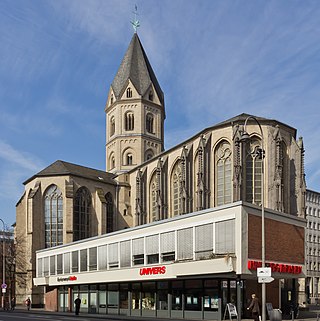
St. Andrew's is a 10th-century Romanesque church located in the old town of Cologne, Germany. It is one of twelve churches built in Cologne in that period. Archbishop Gero consecrated the church in 974, dedicating it to St. Andrew, although an earlier church at the site was dedicated to St. Matthew. In the 12th century, the church was rebuilt in the Romanesque style, and was probably completed after the great fire of Cologne in 1220. In the crypt of the church lies a Roman sarcophagus from the 3rd century, which holds the remains of the 13th-century theologian and natural philosopher St. Albertus Magnus. Since 1947, the Dominican Order has ministered to the church.
80. St. Mariä Geburt
St. Mariä Geburt is a Roman Catholic parish and pilgrimage church in Cologne-Stammheim. The miraculous image of the Joyful Mother venerates the patron saint of the Archdiocese of Cologne, St. Mary. The pilgrimage season is the feast of Ascension Day and the festive octave around 8 September.
81. Alt St. Maternus
The church of Alt Sankt Maternus, also known as the "chapel", is located close to the Rhine in the old historic centre of the Cologne suburb of Cologne-Rodenkirchen. The church is one of the 13 small Romanesque former village churches in front of Cologne's medieval city wall. It is looked after by the Förderverein Romanische Kirchen Köln.
82. Nikolaus-Kapelle

The St. Nicholas Chapel in Cologne-Westhoven, located near the Rhine, was built around 1100 and is dedicated to the patron saint of boatmen, Nicholas of Myra. It is the smallest of the surviving former Romanesque village churches in Cologne, is surrounded by an old cemetery and is cared for by the Förderverein Romanische Kirchen Köln.
83. Weckschnapp
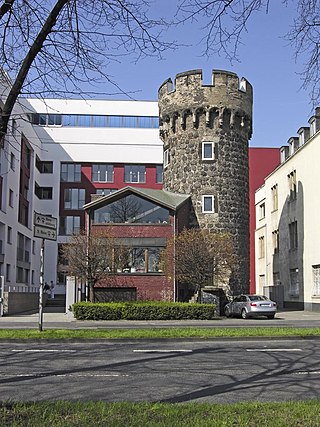
Weckschnapp is the name given to a medieval turret with a modern extension on the Konrad-Adenauer-Ufer on the left bank of the Rhine in the north of the old town, which was part of the medieval city wall of Cologne.
84. Grabeskirche St. Bartholomäus
The burial church of St. Bartholomew is a former Roman Catholic parish church in Cologne-Ehrenfeld, which has been used as a columbarium since 2014, where the ashes of the deceased are buried in burial chambers. The sponsor of the burial church is the Catholic parish of Saints Rochus, Epiphany and Bartholomew. It is the first and so far only burial church in the Archdiocese of Cologne.
85. Vorgebirgspark
The Vorgebirgspark is a 13.9-hectare park in the south of Cologne's city centre between the districts of Zollstock, Raderberg and Raderthal. It was laid out from 1910 to 1914 according to plans by the garden architect Fritz Encke. On 1 July 1914, it was opened to visitors.
86. St. Cecilia's Church
St. Cecilia's Church is one of the twelve Romanesque churches in Cologne’s old city, maintained by the Foundation of Romanesque Churches in Cologne. The present building, little changed since its inception, dates from 1130-60. Since 1956, the church has been the home of the Schnütgen Museum for medieval art.
87. St. Nikolaus
St. Nicholas is a Roman Catholic Romanesque basilica and parish church in Cologne-Dünnwald in North Rhine-Westphalia, Germany. It was originally built as a collegiate church of the Premonstratensian nuns.
88. St. Gertrud
St. Gertrud is a Catholic parish church in the Agnesviertel district of Cologne's Neustadt district, in the immediate vicinity of the railway embankment. It was designed by the architect Gottfried Böhm in 1960 and built between 1962 and 1965. In 1967, the architect received the Cologne Architecture Prize for the building in the Brutalist style with its asymmetrical forms and concrete execution.
89. St. Amandus
St. Amandus is the Roman Catholic church in Cologne-Rheinkassel in North Rhine-Westphalia and belongs to the parish of St. Pankratius am Worringer Bruch. In the choir area, it represents a smaller copy of the Cologne Collegiate Church of St. Gereon.
90. Klein St. Martin
Klein St. Martin was a parish church in Cologne, which, together with the collegiate church of Groß St. Martin and many other churches and buildings, determined the Cologne Rhine panorama. The church was abolished during secularization and demolished around 1824. The church tower was preserved and rebuilt after destruction in the Second World War.
91. Sankt Johannes Deutz
St. John's Church is a Protestant church in Cologne-Deutz. It is one of the two church buildings of the Evangelical parish of Cologne-Deutz/Poll in the church district of Cologne-Mitte of the Evangelical Church in the Rhineland.
92. Karl-Rahner-Akademie
The Karl Rahner Academy is a Catholic city academy in Cologne. It sees itself as an independent discussion forum in the "Kulturquartier am Neumarkt" in the centre of Cologne and is aimed at people who are interested in theological, philosophical, cultural and social issues. A high proportion of participants with a university degree are reached, even beyond the borders of the city of Cologne and the Catholic Church.
93. Kapelle St. Joseph
The Carmel of St. Joseph in Cologne, founded in the 1850s, was a daughter foundation of the Carmel of Mary of Peace in Schnurgasse, which was first established in Cologne in 1639 and abolished in 1802. However, the new convent only existed until 1875.
94. Käthe Kollwitz Museum
The Käthe Kollwitz Museum in Cologne owns the largest collections of works by the German artist Käthe Kollwitz (1867–1945) and has maintained close links with the Kollwitz family. The museum is owned and operated by the Kreissparkasse Köln savings bank.
95. Schauspielhaus Köln
Schauspiel Köln is a theatre and company in Cologne, North Rhine-Westphalia, Germany. It forms together with the Cologne Opera and other houses the Bühnen der Stadt Köln. The listed building has 830 seats in the Grand House, 120 in the locksmith and 60 in the refreshment room. In addition, the listed 'Halle Kalk' has 200 seats, it was used until closing in the summer of 2015 because of the danger of collapse. Since the 2013/14 season Depot 1 and Depot 2 have been used as interim venues during the extensive renovation of the Schauspielhaus on the site of the former Carlswerk in Schanzenstraße in Cologne-Mülheim.
96. St. Gereon
The Church of St. Gereon in the Cologne district of Merheim is a Roman Catholic church in the Archdiocese of Cologne. It is part of the Catholic Parish Association of Brück-Merheim. The church, consecrated in honour of St. Gereon of Cologne, was built around 1820 after the demolition of the old Romanesque church.
97. Johanneskirche
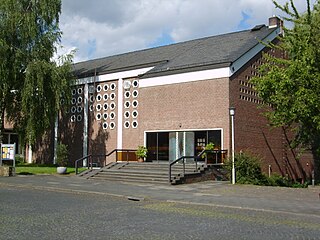
The Johanneskirche in Nonnenwerthstraße in Cologne-Sülz is the second church in the parish of Cologne-Klettenberg, which belongs to the Cologne-Mitte church district of the Evangelical Church in the Rhineland. It was built at the beginning of the sixties to do justice to the growth of the community in the districts of Sülz and Klettenberg.
98. Memorial for Defectors and the Victims of Nazi Military Justice
The Deserters' Monument in Cologne-Altstadt-Nord on Appellhofplatz pays tribute to deserters and war opponents from the National Socialist era in the form of a pergola by Swiss designer Ruedi Baur. It was officially handed over to the public on the occasion of the 70th anniversary of the invasion of Poland by the German Wehrmacht on 1 September 2009.
99. Klettenbergpark
The Klettenbergpark in the Cologne district of Klettenberg is a 6-hectare high-altitude park designed as a natural garden. It was planned since 1903 and laid out by the Cologne garden director Fritz Encke from 1905 to 1907 on the site of a 10 m deep gravel pit on Luxemburger Straße.
100. Tersteegenhaus
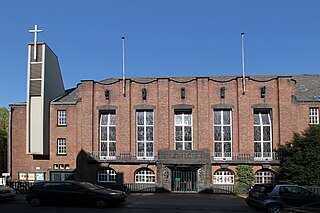
The Tersteegenhaus in Emmastraße in Cologne-Sülz is the second church in the Cologne-Klettenberg parish, which belongs to the Cologne-Mitte church district of the Evangelical Church in the Rhineland. It was consecrated in 1928 and last rebuilt and renovated inside in 2004. Initially, it was only referred to as the "parish hall" and only after 1945 was it named after Gerhard Tersteegen (1697–1769), a theologian and writer of Reformed Pietism.
Share
How likely are you to recommend us?
Disclaimer Please be aware of your surroundings and do not enter private property. We are not liable for any damages that occur during the tours.


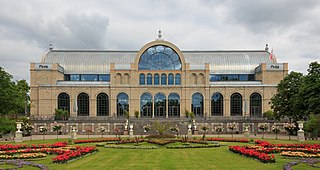

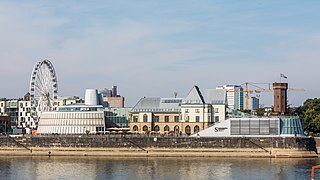
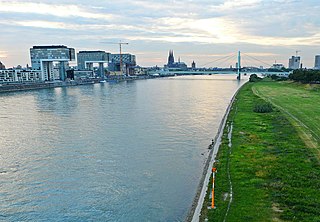
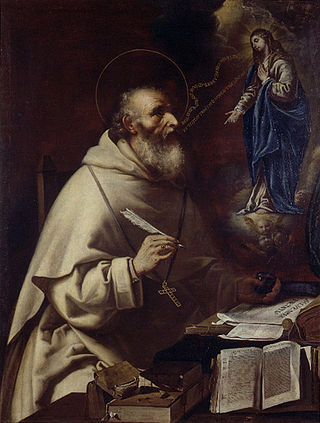
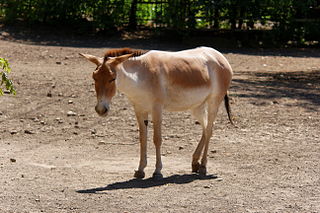

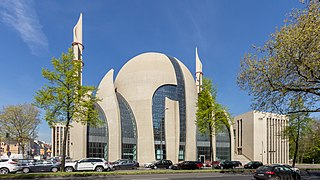
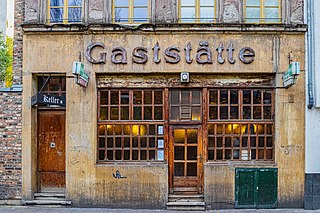

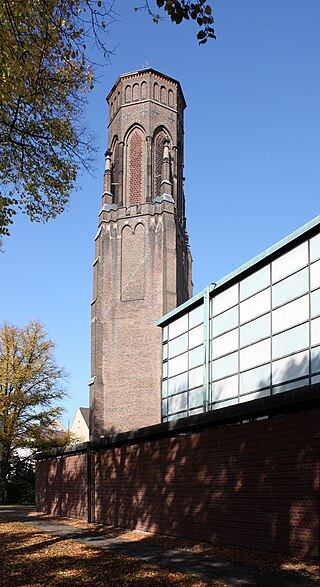
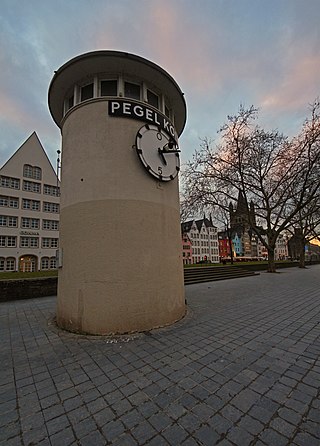
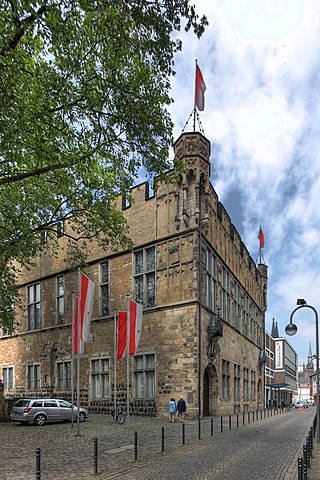
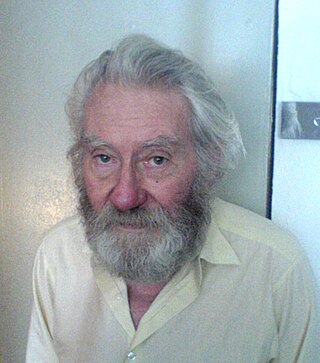
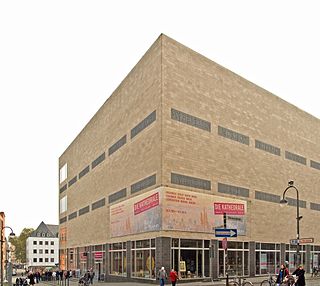
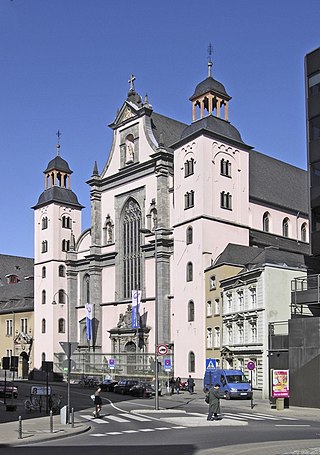
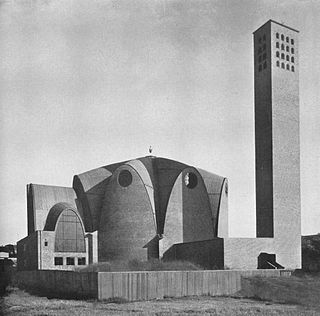
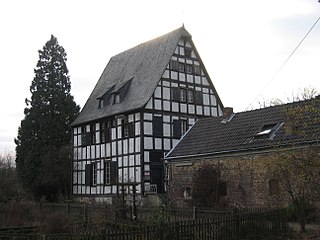

.jpg)
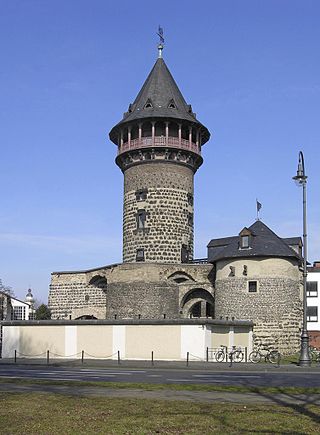

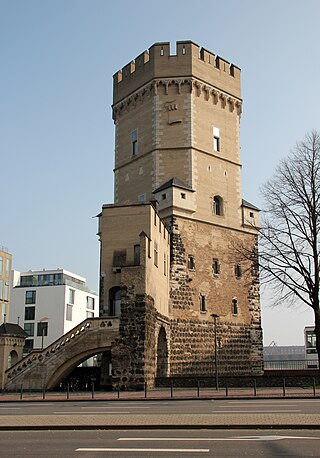
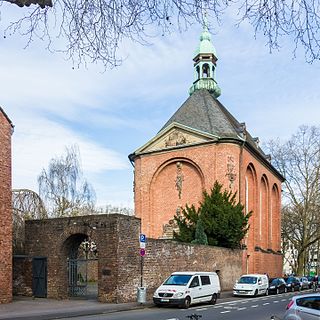
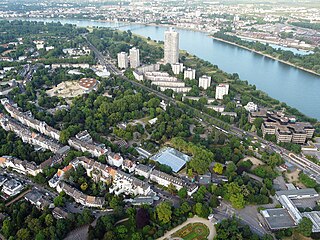
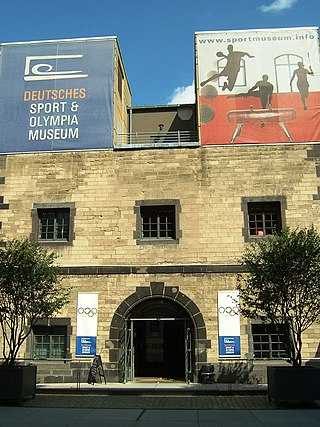
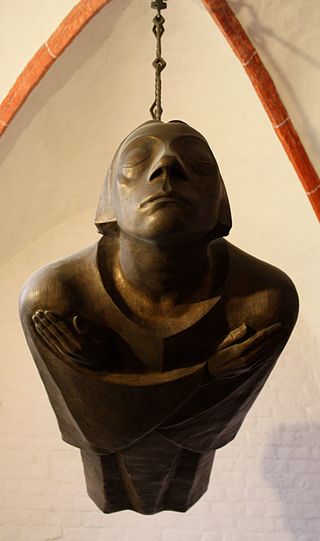

.jpg)
